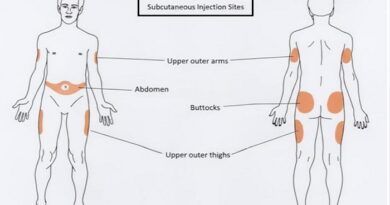Most Common Simple Procedures for Filipino Caregivers, Nurses, and Healthcare Students
Learning the most common simple procedures is vital for Filipino caregivers, nurses, and healthcare students. It is essential for anyone involved in patient care in the Philippines. These basic yet vital medical skills help the safety, comfort, and recovery of patients. This is true whether they are in hospitals, clinics, or home care settings.
In this guide, we’ll go over the top common procedures that Filipino caregivers do. Healthcare trainees also do these procedures. We will include practical applications and safety reminders.
💉 1. Intramuscular Injection (IM)
Used to deliver medications like vaccines, antibiotics, or vitamins directly into the muscle for faster absorption. Common injection sites include the deltoid, thigh, or gluteal muscles.
💊 2. Subcutaneous (SC) Injection
Administers medications as insulin just under the skin. Filipino caregivers and nursing students often use this technique for diabetic patients.
🩸 3. Blood Pressure Measurement
Monitoring blood pressure is a daily routine for caregivers and nurses. It helps detect hypertension or low blood pressure early, ensuring proper medical response.
🌡️ 4. Vital Signs Monitoring
Includes checking the patient’s temperature, pulse, respiration rate, and oxygen saturation. Regular monitoring helps track a patient’s progress and detect early warning signs.
💧 5. Oral Medication Administration
Giving prescribed medicines at the correct dose and time is a key caregiver responsibility. Understanding medication schedules and side effects ensures safe administration.
🩹 6. Wound Cleaning and Dressing
Cleaning minor wounds and applying sterile dressings prevents infection. This promotes faster healing. It is an essential skill in both home and clinical settings.
🚿 7. Bed Bath or Sponge Bath
Provides hygiene and comfort for bedridden or elderly patients. It also helps prevent skin irritation and infection.
💨 8. Nebulization
Nebulization is common among Filipino families. It helps patients with asthma or respiratory issues breathe more easily. This is achieved by delivering medication directly to the lungs.
🧴 9. Blood Sugar Monitoring
Caregivers use a glucometer to check blood sugar levels, helping diabetic patients manage their condition effectively.
🦵 10. Range of Motion (ROM) Exercises
These exercises prevent muscle stiffness and maintain mobility, especially for patients recovering from surgery or stroke.
💩 11. Bowel and Bladder Care
Includes assisting with toileting, diaper changes, and catheter management for dependent patients—done only by trained or supervised caregivers.
💧 12. IV Line Monitoring (for Nurses and Trainees)
Licensed nurses check IV lines. Trained healthcare students check the lines to be sure proper medication flow. They also detect early signs of complications.
🪥 13. Oral and Personal Hygiene
Maintaining oral health and overall cleanliness improves patient comfort and prevents infections, especially for bedridden individuals.
🛏️ 14. Patient Positioning and Turning
Repositioning patients every two hours helps prevent pressure sores and improves circulation—crucial in long-term home care.
💦 15. Nasogastric Tube (NGT) Feeding
Administering food or medicine via an NGT should only be performed by trained caregivers or nurses, with strict medical guidelines.
🧼 16. Infection Control and Aseptic Techniques
Proper handwashing, glove use, and disinfection are vital in preventing infections—especially during home visits or care-giving shifts.
🫁 17. Oxygen Therapy Assistance
Caregivers and nurses set up oxygen tanks or concentrators as prescribed, ensuring the patient gets adequate oxygen support.
🩺 18. Patient Observation and Reporting
Monitoring symptoms like pain, fever, or behavior changes allows caregivers to alert nurses or doctors promptly, ensuring quick action.
✅ Summary
Mastering the most common simple procedures for Filipino caregivers helps build confidence. It enhances competence and compassion in patient care. These skills include giving injections and taking vital signs. They also involve assisting with hygiene and medication. These abilities form the backbone of daily healthcare practice in the Philippines.
If you’re a caregiver or healthcare student, Helal Medical offers training programs. They have workshops and certifications designed to help you offer safe and effective care. These are for those who want to learn or upgrade your medical skills.
Any concerns? Contact us at Helal Medical today.



